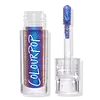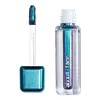What's inside
What's inside
 Key Ingredients
Key Ingredients

 Benefits
Benefits

No benefits
 Concerns
Concerns

 Ingredients Side-by-side
Ingredients Side-by-side

Isododecane
EmollientSilica
AbrasiveTrimethylsiloxysilicate
EmollientEthylene/Propylene/Styrene Copolymer
Microcrystalline Wax
Emulsion StabilisingTriacontanyl Pvp
HumectantTitanium/Titanium Dioxide
Cosmetic ColorantPhenoxyethanol
PreservativeCaprylyl Glycol
EmollientButylene/Ethylene/Styrene Copolymer
Tocopheryl Acetate
AntioxidantEthylhexylglycerin
Skin ConditioningHexylene Glycol
EmulsifyingPentaerythrityl Tetra-Di-T-Butyl Hydroxyhydrocinnamate
AntioxidantAluminum PCA
AstringentCI 77163
Cosmetic ColorantIron Oxides
CI 77891
Cosmetic ColorantIsododecane, Silica, Trimethylsiloxysilicate, Ethylene/Propylene/Styrene Copolymer, Microcrystalline Wax, Triacontanyl Pvp, Titanium/Titanium Dioxide, Phenoxyethanol, Caprylyl Glycol, Butylene/Ethylene/Styrene Copolymer, Tocopheryl Acetate, Ethylhexylglycerin, Hexylene Glycol, Pentaerythrityl Tetra-Di-T-Butyl Hydroxyhydrocinnamate, Aluminum PCA, CI 77163, Iron Oxides, CI 77891
Silica
AbrasiveIsododecane
EmollientTrimethylsiloxysilicate
EmollientPolymethylsilsesquioxane
Quaternium-18 Bentonite
Aluminum PCA
AstringentVp/Hexadecene Copolymer
Cetyl Dimethicone
EmollientPropylene Carbonate
SolventEthylhexyl Palmitate
EmollientTitanium/Titanium Dioxide
Cosmetic ColorantPhenoxyethanol
PreservativeCaprylyl Glycol
EmollientTocopherol
AntioxidantTocopheryl Acetate
AntioxidantSqualane
EmollientHelianthus Annuus Seed Oil
EmollientLimnanthes Alba Seed Oil
Skin ConditioningEthylhexylglycerin
Skin ConditioningDimethicone
EmollientHexadecene
SolventSilica, Isododecane, Trimethylsiloxysilicate, Polymethylsilsesquioxane, Quaternium-18 Bentonite, Aluminum PCA, Vp/Hexadecene Copolymer, Cetyl Dimethicone, Propylene Carbonate, Ethylhexyl Palmitate, Titanium/Titanium Dioxide, Phenoxyethanol, Caprylyl Glycol, Tocopherol, Tocopheryl Acetate, Squalane, Helianthus Annuus Seed Oil, Limnanthes Alba Seed Oil, Ethylhexylglycerin, Dimethicone, Hexadecene
Ingredients Explained
These ingredients are found in both products.
Ingredients higher up in an ingredient list are typically present in a larger amount.
We don't have a description for Aluminum PCA yet.
Caprylyl Glycol is a humectant and emollient, meaning it attracts and preserves moisture.
It is a common ingredient in many products, especially those designed to hydrate skin. The primary benefits are retaining moisture, skin softening, and promoting a healthy skin barrier.
Though Caprylyl Glycol is an alcohol derived from fatty acids, it is not the kind that can dry out skin.
This ingredient is also used as a preservative to extend the life of products. It has slight antimicrobial properties.
Learn more about Caprylyl GlycolEthylhexylglycerin (we can't pronounce this either) is commonly used as a preservative and skin softener. It is derived from glyceryl.
You might see Ethylhexylglycerin often paired with other preservatives such as phenoxyethanol. Ethylhexylglycerin has been found to increase the effectiveness of these other preservatives.
Isododecane is a fragrance, emollient, and solvent.
As an emollient, it helps your skin stay soft and hydrated. Emollients help trap moisture into your skin.
Isododecane's role as a solvent makes it a great texture enhancer. It spreads smoothly on skin and does not leave a sticky feeling behind. Isododecane also helps prevent color transfer in makeup products.
Isododecane is not absorbed into skin.
Learn more about IsododecanePhenoxyethanol is a preservative that has germicide, antimicrobial, and aromatic properties. Studies show that phenoxyethanol can prevent microbial growth. By itself, it has a scent that is similar to that of a rose.
It's often used in formulations along with Caprylyl Glycol to preserve the shelf life of products.
Silica, also known as silicon dioxide, is a naturally occurring mineral. It is used as a fine, spherical, and porous powder in cosmetics.
Though it has exfoliant properties, the function of silica varies depending on the product.
The unique structure of silica enhances the spreadability and adds smoothness, making it a great texture enhancer.
It is also used as an active carrier, emulsifier, and mattifier due to its ability to absorb excess oil.
In some products, tiny microneedles called spicules are made from silica or hydrolyzed sponge. When you rub them in, they lightly polish away dead skin layers and enhance the penetration of active ingredients.
Learn more about SilicaTitanium/Titanium Dioxide is a composite of titanium and titanium dioxide.
Titanium itself is the 9th most common element in the Earth's crust. Titanium dioxide is formed when oxygen is introduced and can be found in ores, dust, sand, and soil.
Pure titanium dioxide is a white powder that is used in many products for color purposes.
With modern production, nano-scale or fine-grade titanium dioxide can be easily produced for cosmetics. In sunscreen, titanium dioxide absorbs UV light.
Tocopheryl Acetate is AKA Vitamin E. It is an antioxidant and protects your skin from free radicals. Free radicals damage the skin by breaking down collagen.
One study found using Tocopheryl Acetate with Vitamin C decreased the number of sunburned cells.
Tocopheryl Acetate is commonly found in both skincare and dietary supplements.
Learn more about Tocopheryl AcetateThis silicone is an emollient. Emollients create a thin film on the skin to prevent moisture from escaping.
It is not soluble in water and helps increase water-resistance in products.
According to a manufacturer, it can blend seamlessly with silicone oils, such as Cyclopentasiloxane.
Learn more about Trimethylsiloxysilicate